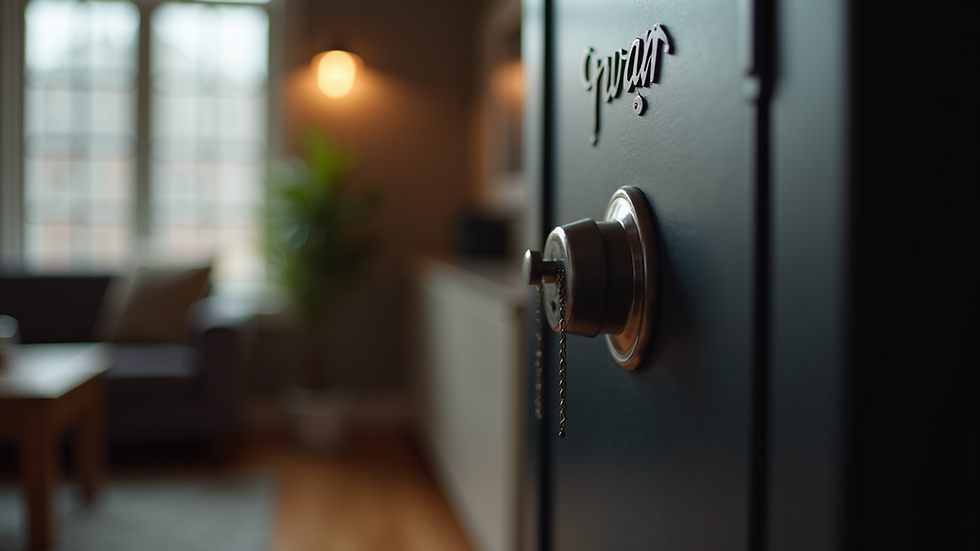Building a Culture of Responsible Gun Ownership
- Louis

- 2 days ago
- 4 min read
When it comes to firearms, the conversation often feels charged and complex. But at its core, owning and using a firearm is about responsibility, safety, and respect. Whether you’re new to firearms or have years of experience, building a culture of responsible firearm use is essential. It’s about more than just knowing how to shoot—it’s about understanding the impact of your actions and fostering a community where safety and education come first.
Why Responsible Firearm Use Matters
Firearms are powerful tools that require careful handling. The importance of responsible firearm use cannot be overstated. It protects not only the owner but also their family, neighbors, and community. When we talk about responsibility, we mean more than just following laws. It’s about adopting habits that prevent accidents and misuse.
For example, always storing firearms securely is a simple but crucial step. Using gun safes or lockboxes keeps firearms out of reach of children or unauthorized users. Another key practice is regular training. Skills can fade, and laws can change, so staying informed and practiced is vital.
Have you ever thought about how your actions influence others? When you model responsible behavior, you encourage those around you to do the same. This ripple effect strengthens the entire community’s safety.

Practical Steps to Foster Responsible Firearm Use
Creating a culture of responsible firearm use starts with practical, everyday actions. Here are some steps that anyone can take:
Education First
Before handling any firearm, invest time in learning. This means understanding how your firearm works, the laws in Maryland, and safe handling techniques. Attending seminars or classes is a great way to start. For instance, Honeybear Tactical offers many classes that cover the essentials.
Safe Storage
Always store firearms unloaded and locked away. Use trigger locks, safes, or lockboxes. This prevents accidents and theft.
Regular Practice
Skill maintenance is key. Regular trips to the range help keep your shooting skills sharp and reinforce safe handling habits.
Clear Communication
If you live with others, especially children, talk openly about firearm safety. Set clear rules and expectations.
Stay Updated
Laws and best practices evolve. Stay informed about Maryland’s firearm regulations and any new safety recommendations.
By following these steps, you’re not just protecting yourself—you’re contributing to a safer environment for everyone.

The Role of Community in Responsible Firearm Use
Building a culture of responsible firearm use isn’t a solo effort. It thrives in communities where knowledge and respect are shared. Local groups, clubs, and training centers play a huge role in this.
Joining a community group can provide support, resources, and a platform to discuss challenges and solutions. It’s also a chance to learn from others’ experiences and share your own. For example, Maryland has several organizations dedicated to safe firearm education and advocacy.
Community events, like safety workshops or range days, encourage responsible habits and foster trust among firearm owners. When we come together, we create a network that promotes accountability and continuous learning.
How Training Empowers Responsible Firearm Use
Training is the cornerstone of responsible firearm use. It goes beyond just learning to shoot—it’s about understanding the full responsibility that comes with owning a firearm.
Professional training programs cover:
Safe handling and storage
Legal considerations specific to Maryland
Situational awareness and decision-making
Emergency response and first aid related to firearm incidents
Taking a course offered by Honeybear Tactical can be a game-changer. It equips you with the knowledge and confidence to handle firearms safely and responsibly.
Training also helps reduce anxiety and uncertainty. When you know what to do and how to do it safely, you’re more likely to make sound decisions in real-world situations.
Encouraging a Mindset of Continuous Improvement
Responsible firearm use is not a one-time achievement—it’s a lifelong commitment. The mindset of continuous improvement means always looking for ways to enhance your skills and knowledge.
Ask yourself:
When was the last time I reviewed firearm safety rules?
Have I practiced recently to maintain my skills?
Am I up to date on Maryland’s firearm laws?
Do I have a plan for safely storing my firearms at home?
By regularly reflecting on these questions, you stay engaged and proactive. This mindset helps prevent complacency, which can lead to accidents or legal issues.
Remember, responsible gun ownership is a journey. It’s about growing, learning, and adapting to new information and circumstances.
Taking Responsibility Together
At the end of the day, building a culture of responsible firearm use is about taking responsibility—both individually and collectively. It’s about recognizing the power and potential risks of firearms and choosing to act with care and respect.
By educating ourselves, practicing regularly, engaging with our communities, and committing to continuous improvement, we create a safer environment for everyone. This culture benefits not just firearm owners but all members of society.
If you’re ready to take the next step, consider joining a training seminar or local group. Empower yourself with knowledge and skills that make a real difference. Together, we can build a community where responsible firearm use is the norm, not the exception.





Comments